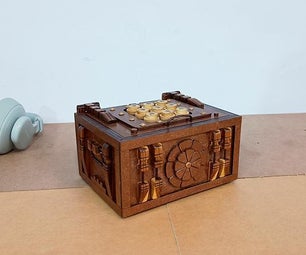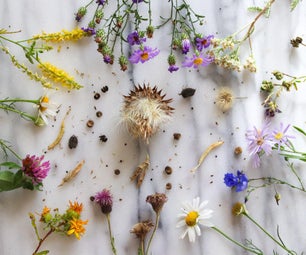Introduction: Grow Onions ... for Free!
I'll let you in on a secret, you don't need to be a green thumb for this to work. And you don't even need to be an adult. This is a great way for big and little kids to learn to grow something edible.
Teacher note: onions take a long time to grow so it's a great idea to start this project at the start of the semester so your class can watch them grow!
Supplies
Container e.g. glass, cup, empty yogurt container - let your mind run wild. And you can decorate it with feathers, stickers, googly eyes etc.
Onion scraps: brown onion, spring onion, green onions or red onion
Something to hold the onion - toothpick, kebab skewer. I find the metal skewers work best.
Tap water
Soil or potting mix
Step 1: Perfect for Even the Worst Gardener
Ok, I don't like throwing $$ away. So when I buy vegetables I like to work out what I can grow from the scraps. Turns out onions and spring onions are incredibly easy to grow. Tempt them with a bowl of water and they spring (no pun intended) into action. Eventually, you will plant them in soil but the main fun is watching the creepy tentacle-like roots grow and beautiful fresh green shoots appear on top.
Step 2: Stake Night
So, you have some onion scraps, now it's time to make them into more onions.
- Pierce a hole through the onion base, for large onions I use 2 stakes.
Step 3: Fill It Up
- Place the staked onion on the top of a container.
- Artist? Now's your chance to let your inner artist shine, decorate your container as you please, or don't.
- Fill the container with water to the base of the onion. If it has roots guide them down so they dangle into the top of the water.
- Place in a sunny spot like a windowsill.
Step 4: Change the Water
You don't like drinking dirty water and neither do your onions.
- Change the water daily.
- As the roots grow longer you can add less water. Only the roots need water.
- Over the next few days, you will see the roots grow longer and new onion sprouts appearing.
Step 5: Operation
This onion is about 2 weeks old. It's looking pretty healthy and soon it will be time to transplant it into soil. I recommend waiting a few more days so the smaller green shoots are more established, but I wanted to show you the steps so I pushed on.
To do this:
- remove the stakes.
- gently peel off the outer layers.
- use a knife to separate out the different onions. The onion pictured had grown 4-5 new onions!
Step 6: Planting
- put them in some potting mix or soil and give them a good watering.
- onion plants should be spaced 4 to 6 inches apart in the row, with rows 1 to 2 feet apart.
- water about once a week depending on your weather conditions.
Note: I need to buy more soil so at the moment they're in with other seedlings. But you should follow the advice above and give them space to grow.
Step 7: Harvesting
If your sprouts grow into flowers, wait until the flowers go to seed, then save the seeds for planting next season. These seeds will produce more onions!
If they grow into onions, bingo! Pat yourself on the back. Now, what to make?
You can also harvest the spring onion sprouts to use as a garnish in your cooking.

Runner Up in the
DIY Summer Camp Contest









